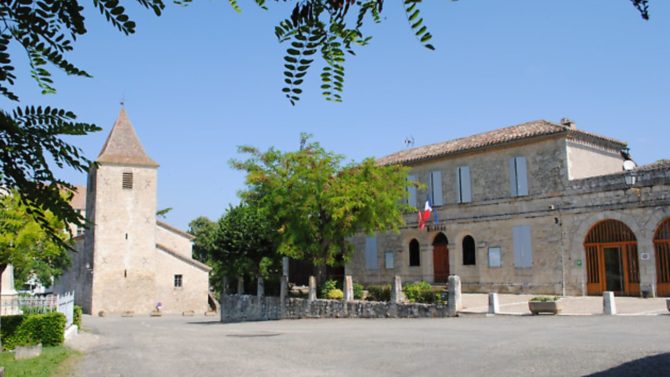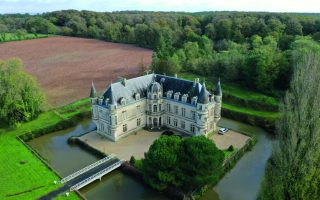Discover glorious Gers, Midi-Pyrénées

History-laden villages, fortifying wine and sunshine in abundance: Susan Palmer introduces the very tempting Lomagne area of Gers

Did you know that living in Gers has been scientifically proven to increase the longevity of your life – and, even better, that it’s due to drinking the local wine? Read on to find out more…
First, however, a bit of brief history on this beautiful department in south-west France characterised by bastide towns, rolling hills and views of the Pyrénées. One of the original 83 départements created during the French Revolution from the original provinces of Guyenne and Gascony, it is often referred to as one of the least densely populated areas in all of western Europe.
As Gers is a large department, I am going to focus on a single area – known locally as the Lomagne – which takes in the north east-of the department of Gers and the south-west of neighbouring Tarn-et-Garonne. Importantly, in the Lomagne you are never more than an hour away from Toulouse international airport, and are also close to the A62 motorway as well as several train stations taking you directly to Paris or the Mediterranean coast.

This area is one of the sunniest parts of France benefiting from over 2,000 hours of sunshine each year. Although there can be chilly weeks in the winter months and even occasional snow, spring is never far around the corner and, of course, summer can be very hot.
With this in mind, there are many swimming lakes and pools that you can take advantage of: the lake at St-Clar has water slides and a sandy beach, and there are also pools with slides at Beaumont-de-Lomagne and Solomiac. The municipal outdoor pool at Lectoure has the most wonderful views towards the Pyrénées.
The Lomagne is steeped in history and boasts many ancient chapels, town squares and old lavoirs (less glamorously known as washhouses in English). Examples of the latter include a rectangular one with Gothic fountain and trough on the ramparts of Tournecoup, and a covered circular one at Mauroux.
The landscape is also scattered with dovecotes, better known as pigeonniers. Prior to the Revolution, only the nobility were granted the privilege of keeping pigeons and therefore, in order to demonstrate their owners’ social position, these buildings were usually ornate and elaborate. Nowadays many have been renovated to form a part of the home or to be rented out as a gîte.

The château in the small village of Gramont is one of six national monuments in the Midi-Pyrénées region. Originally a medieval castle, the current gatehouse was added in the 14th century and the central body of the house is built in the Italian Renaissance style with ornate sculptures on its facade.
The current owners have spent the last 10 years restoring it to its former glory and run regular tours for visitors throughout the year. The village also has an excellent restaurant, gallery and honey museum.
Auvillar is classified as one of France’s 157 Plus Beaux Villages. One of the stopping points for pilgrims on the Chemin de St-Jacques de Compostelle, it is the site of an ancient community that was probably rebuilt during Roman times. It is well known for pottery and art as well as its rose brick and stone clock tower, cobbled streets, central marketplace and breathtaking views of the Garonne river.
From age to age
The market town of St-Clar has developed over hundreds of years and two centres have been established, each with their own arcaded square. The old market square was once known as Place de la Garland, referring to the row of fine stone houses that lines it.
St-Clar’s church dates from the 11th century, but these days the town’s skyline is dominated by its 19th-century counterpart built in neo-Gothic style. By contrast, Lachapelle’s Baroque-style chapel was originally constructed in the 12th century and renovated in the 18th. With two floors of convex and concave gilded galleries, it has the feel of a Venetian theatre.
Beaumont-de-Lomagne is well known for its trotting course – known here as a hippodrome – in which horse races take place with the jockey riding behind on a chariot. The village is also the birthplace of Pierre Fermat, the mathematician often called the founder of the modern theory of numbers and more famously mentioned by Stieg Larsson in The Girl Who Played With Fire.
Of course, I couldn’t possibly write an article about the Lomagne without mentioning the beautiful sunflower fields that dominate the countryside throughout the summer. Other produce grown in the area is wheat, rapeseed and lavender, and in high season you will find locally grown melons in all the supermarkets as well as on roadside stalls.
Garlic is an essential ingredient in the cuisine of south-west France, although in ancient times it was used as a remedy for a wide variety of ailments ranging from the common cold to leprosy and epilepsy. The Lomagne is famous for its white garlic, with over 300 producers growing this award-winning variety.
With many dating to the Napoleonic times and earlier, the houses in this traditional farming community are mainly maisons de maître or farmhouses. The landowner would probably have lived in the maison de maître – usually the largest house in the village with a grand entrance, high ceilings and often a similar layout upstairs to downstairs.
Many farmhouses still have the wide central corridor where the extended family would have gathered to eat on special occasions. Most would have had an attached barn, examples of which have generally been converted and integrated into the house; of course, there are many barn conversions too.
So, coming back to how to increase your life expectancy by drinking the local wine! It’s all down to a chemical called procyanidin, together with the use of traditional fermentation methods.
In a study of red wines from around the world, only the wines from this area and Sardinia were thought to include sufficient amounts of this chemical to increase the longevity of life. So, if you too would like to live a long life in this beautiful part of the country, take a look at our range of properties in Gers at www.selectionhabitat.com.
Susan Palmer is a sales advisor at agency Selection HabitatTel: 0033 (0)5 65 70 10 49
Share to: Facebook Twitter LinkedIn Email


